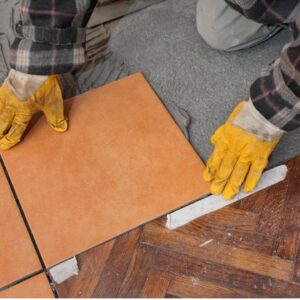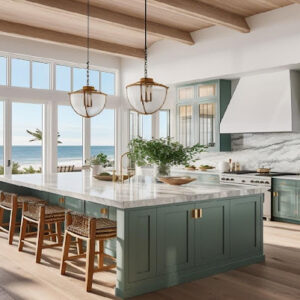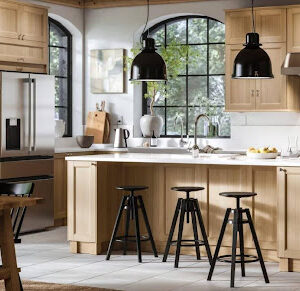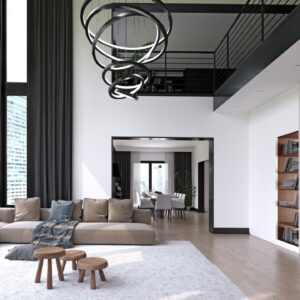We spend most of our time living and learning in an enclosed space without the realization that the arrangement and colors of that learning space affect our behaviors psychologically. Environmental psychology, or space psychology, deals with how humans interact with the space they live and learn in. materials, proportions, lighting, scale and acoustics all affect our senses in some ways, generating different kinds of feelings.
One of the many ways to enhance your learning space is to create space to promote creativity and safety. To promote positive feelings and emotions in any workspace, it’s important to consider the psychology of interior design when building it. This is as important as ensuring that the psychological need of everyone that’ll be in that room is met. So, interior design can improve space, which is beneficial for students as their learning experience is improved.
Classroom design impacts learning.

The classroom environment can affect how students learn and their academic performance. Environmental qualities should be considered, such as artificial and natural lighting, room temperature, acoustics, air quality, and the most appropriate colors. Irrespective of a student’s age, they’ll learn better when the learning environment is more relaxed.
Comfort is important in helping humans achieve whatever they set themselves to achieve. All you need to achieve comfort is eliminating factors that can distract the students, such as unregulated temperatures, glares, and harsh lighting. When planning the lighting of a classroom, natural light should be the priority as it helps to improve mood. On the other hand, industrial lights are unattractive and emit harsh light that affects the learning process. Also, the buzzing sound of industrial light can distract the students, especially if they have sensitive hearing or a learning disability.
Color is powerful
Color is often underrated, but it plays a crucial role in inspiring creativity and regulating mood regarding the learning space interior design, the colors to be used depending on the student’s age group and what they’re being taught. Color is capable of altering moods, and this is something psychology students will learn quite early in the course. They may even have to write essays about how colors impact mood and improve learning. Thankfully, they can outsource their assignments to professional writers who can do it for them and even provide law essay help if they need it.
The power of color
In studying how color impacts learning and the ability to write a paper, it’s also important to consider the students’ ages and the sex of the majority of them. Young children will generally prefer the red color, while college students prefer to use blue hues. Children love vivid colors, and it helps to improve their creativity. However, as they grow older, they’re likely to change their preference to pastel shades which has a calming effect and helps to study better.
Several shades of colors can also contribute to the student’s concentration and ability to retain information. Green helps to calm the nervous systems, while colder shades improve their concentration. So, using several colors within a classroom means allows you to address several psychological needs that the students may have and create a more relaxed and calm learning environment.
The importance of furniture
The kind of furniture that is used in a learning space is capable of altering the concentration level of the students and also determines how relaxed they are. So, the impact of interior design on the student’s learning ability in the learning space doesn’t end with colors and lighting. The furniture that is used is also important, as well as the arrangement of the furniture. Studies prove that student can improve their academic performance by being within a learning environment containing several new items to create a more appealing space.
The way the chairs, tables are desks are located and arranged plays a crucial role in the student’s learning experience. If they’ll be working individually, placing the tables in a row is ideal and more effective. This is also more convenient. However, if they’ll be working in groups or you’re seeking to promote student interaction, then arranging the furniture in a horseshoe shape or an open circle is more effective. This ensures that all of them can see without any form of obstacles. Arranging a classroom in this manner is one of the best ways to accomplish productive teamwork.
There are now several classrooms using computers, so it’s crucial to organize the workspaces. So, you should provide the students with ergonomic furniture which can positively influence their environment and help to improve their performance by making them more comfortable. However, you should always remember that the horseshoe shape arrangement helps ensure the student’s learning experience improves through student engagement.
Conclusion
The psychology of interior design for the learning space teaches that creating a positive learning environment is the best way to enhance learning and improve students’ performance. This is an important step for students to achieve success.
Understanding how interior design affects the human mood can help educators alter their classroom setting and create a safe and comfortable space to meet the different needs of their students.
If you’re using a small room, you should consider possible distractions, visibility of presentations, lighting, and whether the room is too dull or too busy. Following a minimalistic approach is often better because too many items in a learning space can constitute distractions. The important things to consider when creating the ideal learning space are appearance, lighting, air quality, and color.












Commented Posts